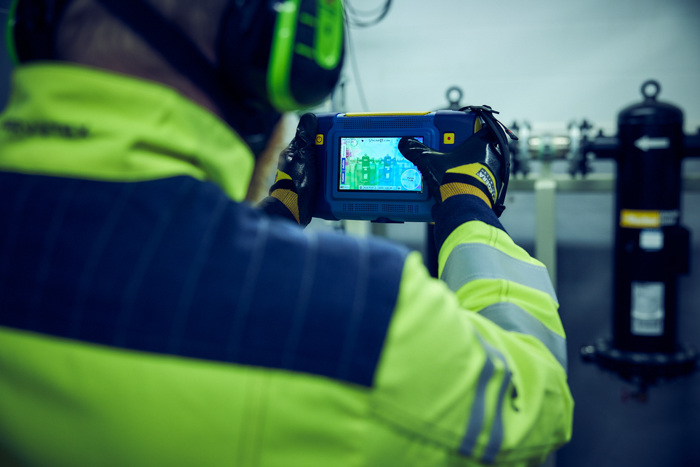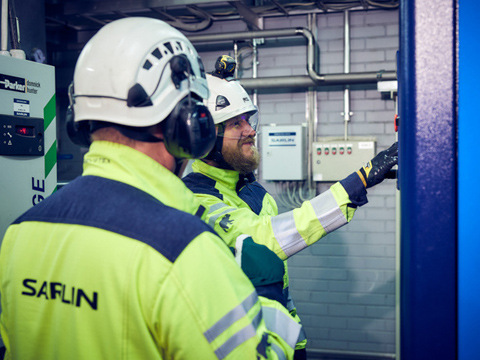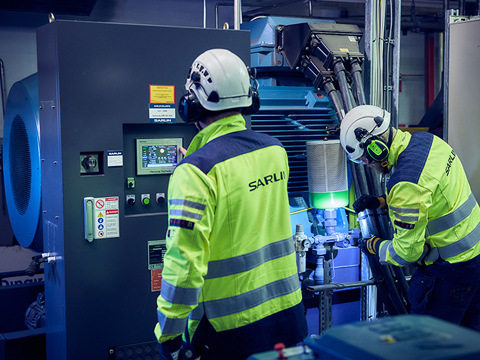1. Correct pressure levels eliminate needless power consumption
Excessive pressure is one of the most common ways energy is wasted in compressed air. Network pressure is kept high just in case, but this has many cascading effects: compressors consume more electricity and produce less useful air, and running them harder means higher repair costs.
Even small changes can make a big difference. If you can reduce pressure by 1 bar, you can save about six to eight per cent in electricity consumption. In practice, finding the correct pressure levels is not about lowering the pressure level by a set amount. First, the critical consumers must be identified and their optimal pressure levels determined in relation to the system’s consumption and demand as a whole.
The correct pressure level is determined by monitoring the system’s output and optimising the pressure level according to the measurements once enough data has been collected.
2. Monitored systems avoid waste
By measuring the air consumption of compressed air systems, we have often discovered deviations that have revealed sizable leaks. Up to 30 per cent of compressor output may be lost through weak connections, leaky hoses and loose valves, for example.Our real-time consumption monitoring can pinpoint these deviations for correction and keep your valuable energy from disappearing into thin air. Fixing just one major leak in time will more than pay for the cost of consumption monitoring and repairs.
If you have yet to check your system for leaks or your energy consumption seems high, now is the time for a leak survey!
You can also use our calculator to estimate the cost of compressed air leaks in your process. Compressed air leaks are just a fact of life. With continuous monitoring, you can discover leaks before they develop into expensive problems.
3. Air purification is a hidden energy sink
Even the best compressed air systems cannot achieve good efficiency if the produced air is treated carelessly. To achieve high-quality compressed air, it must be treated to remove dust, oil, impurities, etc.
Compressed air purification is a complex system where both high air quality and minimal pressure losses must be achieved. The energy efficiency of air purification should be discussed at the system’s planning and investment stage because the pressure loss of the treatment equipment must be accounted for in the dimensioning and selection of the compressors.
For energy savings, the correct selection, dimensioning and continuous maintenance of the purification equipment is decisive. Dryers, filters, aftercoolers and oil separators must be designed and dimensioned to be exactly right for the application.
4. Use your waste heat
The exploitation of waste streams is among the most important opportunities for industrial energy efficiency. Better energy recovery is made possible by next-generation technologies, so it would be a waste to simply dump your side streams.
Compressors generate waste heat during operation, which you can effectively redirect to other applications.
Some of the electrical energy consumed for compressed air production is converted into heat, most of which you can recover for use. For example, heat is useful for heating your facilities, directly saving you money on your energy bill.
5. Effective control provides accurate data about the state of compressed air
Once you fix all the leaks, adjust your pressure level and optimise your equipment, how do you make sure your compressed air system remains energy-efficient? Unless you keep an eye on your compressor room, all the benefits you have achieved will start to pour out during the next deviation.
You need continuous control and monitoring of your compressed air system to solve the key challenges for its reliability. A control system will indicate where your compressed air actually goes, how much energy you are spending to produce the air and whether there are deviations in consumption. This information can save on costs, improve system reliability and help maintenance do a better job.
Sarlin Balance is the only compressed air control and monitoring system on the market developed in Finland that provides real-time information about your system. The Balance system is suitable for all industrial applications using compressed air regardless of system size and the manufacturer and type of compressor.
Sarlin Balance
- Maintains optimal network pressure at all times – satisfies peak demand as well.
- Evens out compressor loads to save energy and prolong equipment service life.
- Optimises purification by controlling dryers and maintaining the desired dew point.
- Reveals leaks and deviations in consumption with real-time monitoring.
- Collects data about the compressed air system as a whole, including temperatures, pressure levels, and energy and air consumption.
You need not take our word for it – you can use our calculator to estimate how much energy and money you could save with Sarlin Balance.






